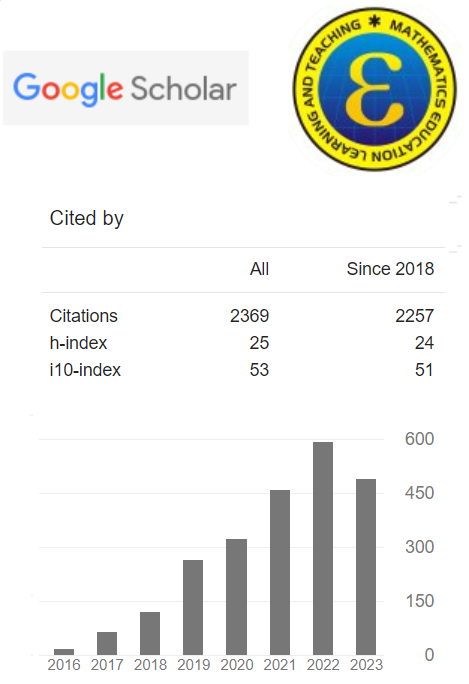Bar Model: A Beneficial Tool in Learning Percentage
(1) IAIN Syekh Nurjati Cirebon
(2) Yayasan Inspirasi
(*) Corresponding Author
Abstract
Keywords
Full Text:
PDFReferences
Bakker, A., & van Eerde, D. (2015). An Introduction to Design-Based Research with an Example From Statistics Education. https://doi.org/10.1007/97894-017-9181-6_16
Hawera, N., & Taylor, M. (2011). Twenty Percent Free! So how much does the original bar weigh? Australian Primary Mathematics Classroom, 16(4), 3–7.
Heuvel-Panhuizen, M. Van Den. (2003). The didactical use of models in realistic mathematics education: An example from a longitudinal trajectory on percentage. Educational Studies in Mathematics.
Ningtyas, Y. D. W. K. (2014). Supporting 5th Grade Indonesian Students in Learning Percentages. Proceeding of the 2nd SEADR, 408–415. Palembang.
Ningtyas, Y. D. W. K. (2016). Penggunaan Batang Persen untuk Menyelesaikan Permasalahan tentang Persen. Konferensi Nasional Penelitian Matematika Dan Pembelajarannya (KNPMP I) Universitas Muhammadiyah Surakarta, 469–476. Universitas Muhammadiyah Surakarta.
Parker, M., & Leinhardt, G. (1995). Percent: A Privileged Proportion. Review of Educational Research, 65(4), 421–481. https://doi.org/10.3102/00346543065004421
Reys, R., Lindquist, M. M., Lambdin, D.V. & Smith, N., & L. (2007). Helping Children Learn Mathematics. New Jersey: John Wiley & Sons, Inc.
Rianasari, V. F., Budayasa, I. K., & Patahuddin, S. M. (2012). Supporting students’ understanding of percentage. Journal on Mathematics Education. https://doi.org/10.22342/jme.3.1.621.29-40
Sarumaha, Y. A., Putri, R. I. I., & Hartono, Y. (2018). Percentage Bar: A Model For Helping Fifth Grade Students Understand Percentages. Mosharafa: Jurnal Pendidikan Matematika. https://doi.org/10.31980/mosharafa.v7i2.35
van Galen, F., Feijs, E., Figueiredo, N., Gravemeijer, K., van Herpen, E., & Keijzer, R. (2008). Relationships between fractions, percentages, decimals, and ratios. In Fractions, percentages, decimals and proportions: A learningteaching trajectory for grade 4, 5, and 6. Rotterdam: Sense Publishers.
Van Galen, F., & Van Eerde, D. (2013). Solving problems with the percentage bar. Journal on Mathematics Education
DOI: 10.24235/eduma.v8i2.5392
Article Metrics
Abstract view : 63 timesPDF - 34 times
Refbacks
- There are currently no refbacks.
Copyright (c) 2022 Eduma : Mathematics Education Learning and Teaching












